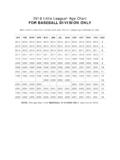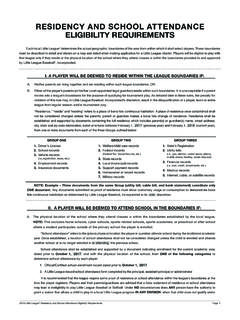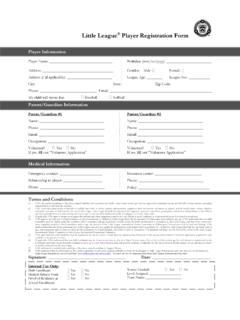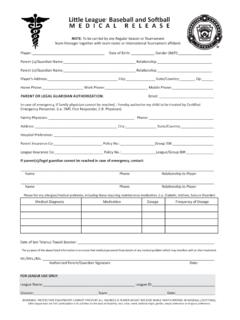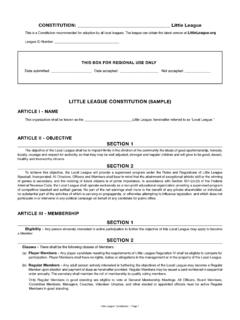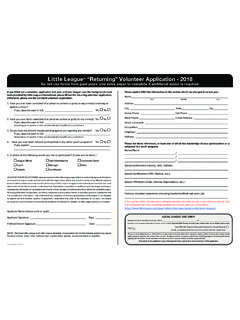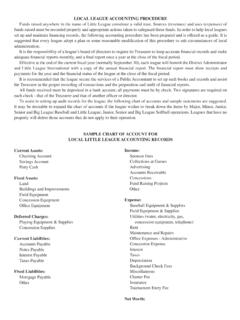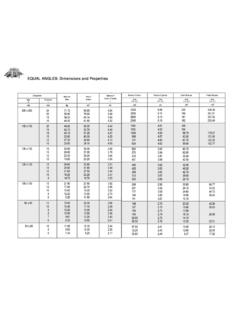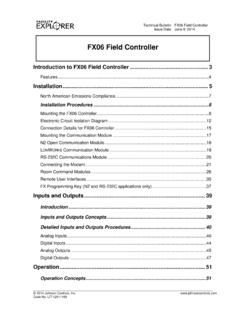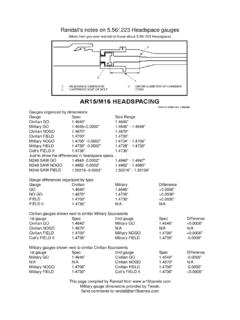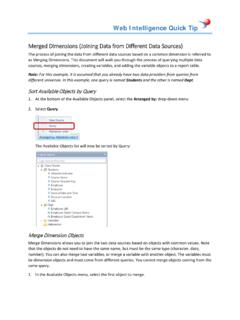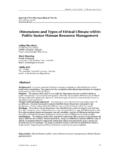Transcription of Standard Little League Field
1 Standard Little League FieldHow to convert a Standard Little League Field to a Little League Intermediate (50/70) Baseball Division fieldNot drawn to scale46 feetThis presentation will explain the step by step process of converting a Standard Little League Field , so that it can also be used for the Little League Intermediate (50/70) Baseball Division. A Standard Little League Field has base paths of 60 feet, and a pitching distance of 46 feet (measured from the back point of home plate to the front edge of the pitcher s plate) .The distance from the back point of home plate to the outfield fence should be at least 200 feet, but not more than 275 feet, for a Field that will be used for both the Standard 46 60 Little League Division, and the Intermediate Little League FieldNot drawn to scaleExtending the Skin AreaIn this first section, part of the outfield grass is removed, which will extend the clay area of the to be removedNot drawn to scaleExtending the Skin AreaDrive a stake into the ground at the center of the back edge of the pitcher s goes hereNot drawn to scaleExtending the Skin AreaExtend the measuring tape (or 69 foot chain/rope) 69 feet until it intersects with one of the foul lines as shown.
2 Not drawn to scaleExtending the Skin AreaUsing eco friendly Field marking paint or chalk, create an arc through the outfield grass to the other foul line, maintaining the 69 foot distance from the back of the pitcher s plate. White Paint or chalk, 69 feet from back of pitcher s plateNot drawn to scaleExtending the Skin AreaUsing a sod cutter (ideally), remove the grass inside the arc. Replace soil with clay or infield GrassNot drawn to scaleAdding New BasesThe anchors for three new bases will need to be installed underground. First, second and third base at all levels are required to disengage their basesNot drawn to scaleAdding New BasesThe distances between bases for Intermediate League layout are drawn to scaleDistance from back point of home plate to outside edge of first and third base: 70 feetDistance from outside edge of first and third base to CENTER of second base: 70 New BasesThe distances between bases for Intermediate League layout are drawn to scaleDistance from back point of home plate to CENTER of second base: 99 New BasesThe base must dislodge from its anchor.
3 One style of such a base is shown above in cutaway view. The low profile pad (shown in red) is at ground level, so it can be left in place while the dis engageable base is removed. This permits the bases to be moved back and forth as needed, so that the Field can be used for either 46 60 games, or Intermediate League drawn to scaleGround levelDis engageable baseMetal postMetal sleeveConcrete anchorLow profile rubber padModifying the Pitcher s MoundThe next step is to enlarge the pitcher s mound and install a new pitcher s drawn to scaleModifying the Pitcher s MoundRemove the stake placed in the mound earlier. Now, drive that stake into the ground, centered on a line between home plate and second base, 48 feet, six inches from the back point of home plate. (It will be 18 inches back from the front edge of the existing pitcher s plate.)Existing Mound(10 foot diameter)Aligned with middle of second base48 feet, 6 inchesDrive stake hereNot drawn to scaleModifying the Pitcher s MoundUsing a tape measure or pre measured length of rope or chain (6 feet ), create a 12 foot diameter circle as shown.
4 Contouring the mound, detailed on the next page, is not necessary if the infield is crowned so that the rise from home plate to the pitcher s plate is Mound(12 foot diameter)000 Not drawn to scaleStakeTape measure, chain or rope (6 feet)Existing Mound(10 foot diameter)Modifying the Pitcher s MoundContour the mound as shown above in a cutaway view, with a gradual/even degree of slope. Both pitcher s plates for Little League Majors and the Intermediate League are 18 inches by four inches. (Shown from the first base side of the infield.)Stake (48 feet, 6 inches from the back point of home plate)0213456789101112 Front edge of Intermediate League pitcher s plate (50 feet from back point of home plate)Level of home plateFront edge of Standard Little League pitcher s plate (46 feet from the back point of home plate)Second baseFeet18 inches from stake to front edge of intermediate League pitcher s plate30 inches from stake to front edge of Standard LL pitcher s plateNot drawn to scale8 inches6 inchesModifying the Pitcher s MoundCreate level areas as shown above for the two pitcher s plates.
5 (Shown from the first base side of the infield.)0213456789101112 Level of home plateSecond baseFeetNot drawn to scaleLevel area of 46 foot pitcher s plate4 inches17 inches40 inchesLevel area of 50 foot pitcher s plate6 inches30 inches48 inches11 inches18 inches11 inches15 inches18 inches15 inches48 inches from front edge of Standard Little League pitcher s plate, to front edge of 50 foot (Intermediate League ) pitcher s plateModifying the Pitcher s MoundThe pitcher s plate that is noted above must be removed during Intermediate League games. Also, an optional extended area may be added, to help prevent loss of grass in front of the mound. However, this area is not considered part of the Mound(12 foot diameter)Not drawn to scalePitcher s plate for Standard Little League Field to be removed during Intermediate League games000000 Optional landing areaToward home plat
